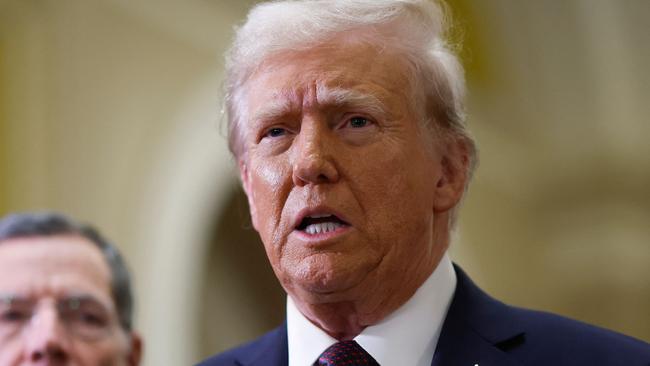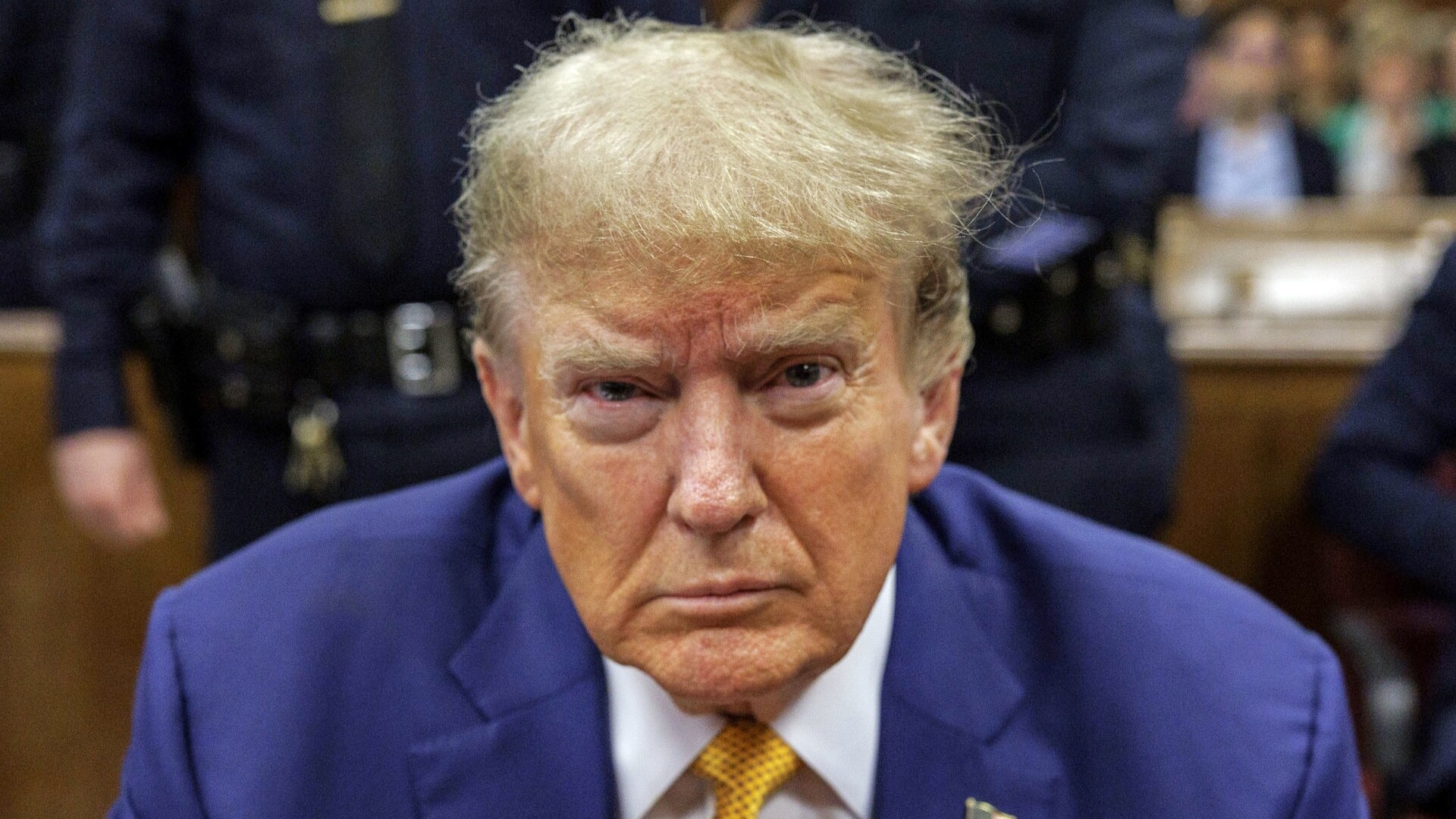
Many Americans will consider the move, which would brand Trump as the first convicted felon to become president of the United States, a victory for the rule of law. Many others, however, will see it as the outcome of politically driven charges that would never have been elevated into a felony had the defendant not been named Donald J. Trump.
The critics will, in other words, view it as confirming Trump’s claim that the American legal system is so deeply politicised as to be structurally corrupt.
And President Joe Biden’s purported justification for the sweeping pardon he granted his son – that without it, Hunter Biden was likely to be persecuted merely for who he is, rather than for what he has done – can only strengthen that perception.
That the American legal system, particularly at state level, has a political overlay is undeniable. Unlike Europe, the public system of law enforcement in the United States emerged after the coming of near universal white male suffrage and the development of a strongly competitive party system.
Forged, during the middle years of the 19th century, in the tumultuous aftermath of Jacksonian populism and under the impact of a crime wave associated with breakneck urbanisation, it was, from the start, intensely controversial. In one state after the other, the Jacksonians and their heirs mounted campaigns arguing that unless the newly formed institutions of criminal justice – including professional police services, public prosecutors and state judges – were directly accountable to the electorate, they would be exploited by elites to suppress the common folk.

As a result, between 1832 and 1860, nearly three-quarters of the states in the Union gave voters the right to elect the system’s key officials, with the states that had the broadest franchise taking the lead.
Alexis de Tocqueville, who observed the initial steps in that direction, was stunned when he learned that “some state constitutions provide for election of members of the courts and require them to submit to frequent re-election”. He ventured “to predict that these innovations (will) lead to disastrous results”.
Whether the consequences were disastrous is a matter of opinion. What is certain is that the number of high-profile cases being prosecuted rises significantly in the lead-up to prosecutorial elections.
Equally, statistical studies find that the convictions secured in those cases are especially likely to be overturned on appeal, suggesting they should not have been brought in the first place.
The claim that Trump was the victim of a political trial is therefore not entirely fanciful. But while that trial, as well as the slew of other cases involving Trump, did not prevent his decisive victory, it has made the entire US legal system, which was already subject to ferocious attack, even more politically contentious.
The heat is only likely to rise as the Trump administration seeks to implement its agenda. Entire swathes of his agenda were subject to legal challenge in Trump’s first term; that is certain to recur but in a legal context that places substantially greater obstacles in Trump’s path.
At the heart of those obstacles lie the limits the Supreme Court has recently placed on executive action. In effect, the Supreme Court has moved to enforce the separation of powers, notably by imposing on legislatures the undivided responsibility for taking, rather than seeking to avoid, legislative decisions.
Thus, in Dobbs v Jackson Women’s Health Organisation (2022), which reversed Roe v Wade (1973), the Court remanded to legislatures a decision it characterised as a matter of policy and politics, rather than of constitutional law.
At around the same time, it decided, albeit with very little public attention, a quartet of cases, beginning with Alabama Realtors (2021), that extended the “major questions doctrine”. While the Court had previously treated that doctrine as an exception to a wider set of principles, it determined that it would no longer uphold major decisions by executive agencies unless the relevant statutes contained a clear statement authorising the decisions at issue.
Loper Bright Enterprises (2024) then substantially qualified the principle, embodied in the Supreme Court’s 1984 Chevron ruling, that courts should allow executive agencies a wide margin of policy discretion in their interpretation of statutes.
As is already apparent from Ohio Telecom Association (2025), Loper Bright significantly reduces the scope executive agencies have to argue their interpretation is permissible, even if it might be considered a reasonable construction of an ambiguous statute.
Lastly, expressing its concern about instances in which agencies drastically change their interpretation of an unchanged statute, the Court has signalled its intention to subject those instances to heightened scrutiny. As a result, the Trump administration will almost certainly require explicit legislative approval for many of the sweeping changes in domestic policy it has promised to make.
With the Republicans holding a paper-thin majority in the House of Representatives and falling below the 60-vote threshold required for significant legislation in the Senate, those approvals will be extremely hard to secure, obstructing, and in some cases dooming, Trump’s domestic agenda.
There is, as a result, every chance of a clash between the Supreme Court and the president whose ferocity could easily rival that which, during the New Deal, provoked Franklin Delano Roosevelt’s 1937 statement that “the balance of power between the three great branches has been tipped out of balance by the Courts in direct contradiction of the high purposes of the Constitution” – a statement that accompanied Roosevelt’s ultimately unsuccessful attempt to stack the Supreme Court.
But while the Court was then moving, however hesitantly, in Roosevelt’s direction – thus calming the conflict – there is very little chance of the current Supreme Court altering course. Yes, Trump nominated three of its nine members; but those nominations have, if anything, merely strengthened the block on the Court profoundly hostile to unbridled executive discretion.
In the end, a titanic clash between Trump and the Supreme Court would be entirely unsurprising. Trump is a revolutionary, who spurns legalism and has a strongly Jacobin, voluntaristic, conception of politics that sees the world as a war to the finish, in which no holds are barred, between friends and foes.
In contrast, the Supreme Court under Chief Justice John Roberts is a profoundly conservative institution, utterly committed to its role as the guardian of the constitution and of the rule of law.
Alexander Hamilton famously predicted that the courts would prove to be the “least dangerous branch” of the federal government. It may well be the paradox of the coming years that Democrats, who have spent the past decade excoriating the Roberts Court, finally come to appreciate its virtues, while Donald Trump and his allies discover that it is nowhere near as innocuous, easily manipulated or readily intimidated as all that.




Barring a last-minute interventionby the Supreme Court, New York State Judge Juan Merchan will sentence Donald Trump on Friday, US time, for falsifying business records with the intent to defraud.